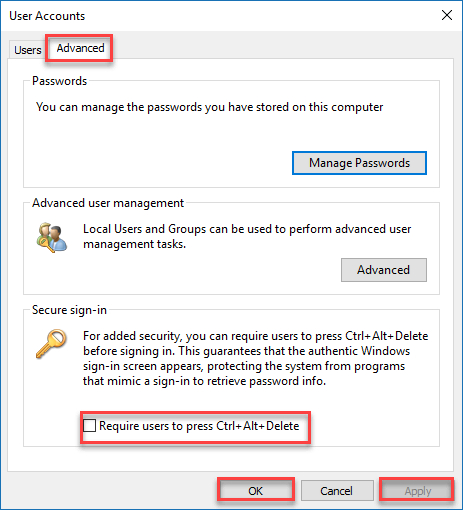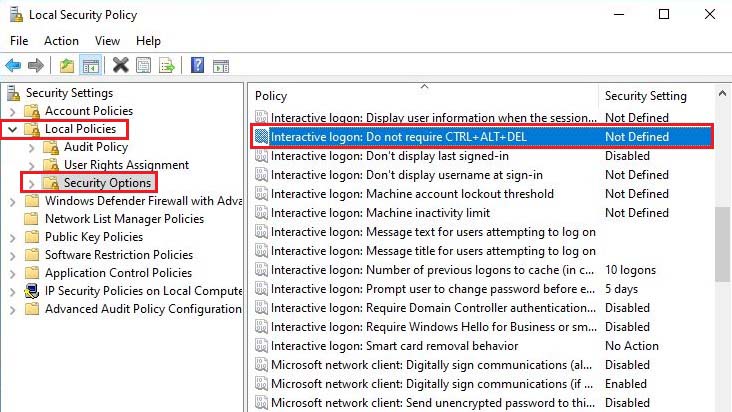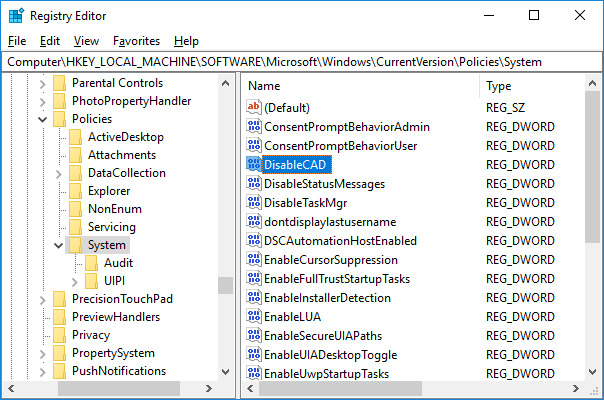Updated February 2025: Stop getting error messages and slow down your system with our optimization tool. Get it now at this link
- Download and install the repair tool here.
- Let it scan your computer.
- The tool will then repair your computer.
Hackers are becoming more creative, but the method of hacking into a Windows account has been around for years. Attackers with physical or remote access to your PC can replace the login screen with a fake one, intercept your password, and potentially compromise your entire Microsoft account. A feature called “Secure Login” is designed to prevent this, which in Windows 10 is usually accessed using Ctrl + Alt + Del. Today we will show you how to enable or disable this function, depending on your preferences.

To prevent intruders from entering your password, Secure Login prompts the user to perform a physical action that activates the login screen. In some cases it is a special Windows security button, but the most common case in Windows 10 is the Ctrl+Alt-Del key combination.
Since Ctrl+Alt+Del cannot be detected by any application, it is very difficult for an attacker to imagine his own fake login screen instead when he presses the key combination. However, for those who are sure of their security, an extra login step can be prevented and in these cases it is relatively safe to turn it off. Let us talk about how to do this using netplwiz, local security policy and registry.
Enable or Disable Windows 10 Secure Sign-In via netplwiz

To enable or disable a secure connection to Windows 10 via Netplwiz, follow the following step-by-step procedure
- Click on the “Search” button. Type Run in the search box and select Run as shown in the following figure.
- After you select “Run” the following dialog box will appear.
- Type netplwiz in the Open text box and click OK as shown in the figure above. After clicking the OK button, the following dialog box will appear.
- Select the Advanced tab and select Users should press Ctrl + Alt + Delete box. Then click the Apply and OK button as shown in the picture above.
Enable or Disable Windows 10 Secure Sign-In with local security policy

If we cannot change the secure connection using the Netplwiz procedure, we can try the settings in the local security policy.
February 2025 Update:
You can now prevent PC problems by using this tool, such as protecting you against file loss and malware. Additionally, it is a great way to optimize your computer for maximum performance. The program fixes common errors that might occur on Windows systems with ease - no need for hours of troubleshooting when you have the perfect solution at your fingertips:
- Step 1 : Download PC Repair & Optimizer Tool (Windows 10, 8, 7, XP, Vista – Microsoft Gold Certified).
- Step 2 : Click “Start Scan” to find Windows registry issues that could be causing PC problems.
- Step 3 : Click “Repair All” to fix all issues.
- Press the Windows + R keys, a dialog box will appear. Type secpol.msc in the Open text box and press OK.
- Local security policy.
- Expand the local policies listed on the left side of the Local Policy window and then click on Security Options.
- Then scroll down to the right and double click on the interactive connection: does not require CTRL+ALT+DEL.
- Select the Enabled check box if you want to disable a secure connection in Windows 10, then click OK.
- To enable a secure connection in Windows 10, select the Disabled check box and then press OK.
- Close the open window and restart the computer.
Enable or disable secure connection in Windows 10 using the registry editor

- Press Windows + R, type regedit, and press Enter.
- Browse to the next registry key:
- HKEY_LOCAL_MACHINE_SOFTWARE\Microsoft\Windows NT\current version\Winlogon.
- Be sure to select Winlogon and double-click DisableCAD in the right panel.
- Note: If you cannot find DisableCAD, right-click Winlogon, then select New > DWORD (32-bit) Value and call it DWORD DisableCAD.
- Now enter the following data in the value data field and click OK :
- To disable the secure connection: 1
- To ensure a secure connection: 0
- Then go to the next registry key and follow steps 3 and 4 :
- HKEY_LOCAL_MACHINE_LOCAL_SOFTWARE\Microsoft\Windows\Current Version\Policies\System
- Close the registry editor and reboot your computer to save your changes.
If you follow these procedures, you can enable or disable a secure connection to Windows 10.
Expert Tip: This repair tool scans the repositories and replaces corrupt or missing files if none of these methods have worked. It works well in most cases where the problem is due to system corruption. This tool will also optimize your system to maximize performance. It can be downloaded by Clicking Here
